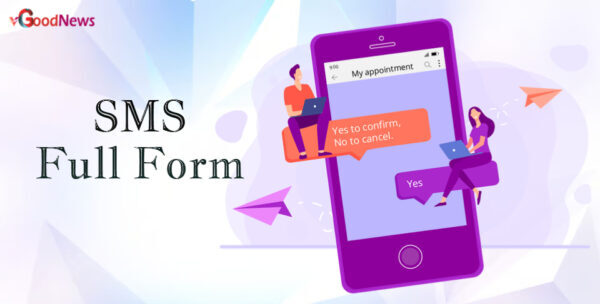SMS Full Form: Short Message Service (SMS) is a text-based communication method sent through cellular networks. This popular form of messaging is widely used globally, enabling people to send concise messages efficiently.
Introduction to SMS Full Form
SMS, or Short Message Service, is a method of communication that allows individuals to send text messages over a cellular network. It is one of the most prevalent ways people keep in touch, even for those without a smartphone. Essentially, an SMS is a simple text message transmitted through a mobile network, providing a quick and straightforward communication method. SMS Full Form
The Evolution and Significance of SMS
SMS has been around since the late 20th century, with its roots tracing back to 1969. Initially designed as a means to send brief messages, SMS has become an integral part of mobile communication. These messages are typically concise, often resembling a brief personal note or news update.
Understanding SMS Technology
SMS operates through a computer protocol that allows text messages to be sent between mobile devices and mobile operators. When a user types a message on their mobile phone, it is sent to the recipient in a sequential order. The recipient’s device then decodes the message and displays it accordingly. SMS Full Form
How SMS Works: SMS Full Form
To understand how SMS functions, one must grasp the basic mechanics of its transmission. SMS messages can be sent in various formats, such as:
- PUT service_number: A command to request sending a service number.
- PATCH message_number: A command to request modification of a message number.
- PATCH message_name: A command to request a change of message name.
This protocol ensures that messages are sent and received efficiently, maintaining the integrity and order of the text.
Benefits of SMS: SMS Full Form
The benefits of SMS are numerous, making it a preferred choice for many users: SMS Full Form
- Universal Access: SMS allows communication across all mobile phones, regardless of the user’s subscription status.
- Flexibility: Users can send SMS from both mobile devices and desktop computers, offering versatility in communication methods.
- Reliability: SMS is a reliable way to send messages, ensuring they are delivered even in areas with poor network coverage.
- Convenience: SMS can be sent and received on various devices, including pagers and portable communication tools.
Sending SMS Messages
To send an SMS, users need to enable the text messaging feature on their mobile devices. Once enabled, they can compose and send messages as follows: SMS Full Form
- Entering Text: Type the desired message into the text field.
- Toggling Features: Users can switch between messaging options by navigating through their device’s settings.
This straightforward process makes SMS a user-friendly option for sending quick messages.
SMS Full Form: Limitations of SMS
Despite its advantages, SMS has several limitations: SMS Full Form
- Text Length: SMS messages are often limited to 160 characters, which can restrict communication.
- Complex Characters: Special characters may require multiple key presses, complicating message composition.
- Accessibility: Some users, especially those with touchscreens, may find it challenging to read or type SMS messages.
- Literacy: Users with limited literacy skills might struggle with understanding and composing text messages.
These drawbacks highlight the need for alternative communication methods for certain user groups.
Conclusion
SMS (SMS Full Form), or Short Message Service, is a powerful communication tool that has revolutionized the way people connect. Since its inception in 1992, SMS has provided a reliable and efficient means of sending text messages over mobile networks. Despite its limitations, the benefits of SMS make it an indispensable part of modern communication.
FAQs about SMS Full Form
What does SMS stand for?
SMS stands for Short Message Service. It is a text-based communication method that allows users to send short messages over a cellular network.
How does SMS work?
SMS works through a computer protocol that enables the transmission of text messages between mobile devices and mobile operators. When a message is typed and sent, it is transmitted in sequence and decoded by the recipient’s device to display the text correctly.
What are the benefits of using SMS?
The benefits of using SMS include universal access, flexibility in sending messages from mobile or desktop devices, reliability in message delivery, and the convenience of being able to send and receive messages on various devices, including pagers and portable communication tools.
What are the limitations of SMS?
The limitations of SMS include a character limit of 160 characters per message, the complexity of entering special characters, accessibility challenges for users with touchscreens or limited literacy skills, and the general constraint of being restricted to text-based communication.
Can SMS be sent from a computer?
Yes, SMS can be sent from a computer. This allows users to compose and send text messages using desktop systems, providing additional flexibility in how and where messages can be sent.

